Following the filling of the tanks, the Gaia satellite enters the Combined Operations Phase: the “COP”. This involves all the different stages by which the satellite is put on to the launcher, the launcher is put on the launch pad, and the launch itself.
All of the activities on the satellite are carried out at this time according to a schedule established by Arianespace, who also manage all of the active participants of this combined phase: Astrium as the prime contractors of the satellite, Roscosmos for the Russian launcher, RUAG for the payload adapter and the clamp band, Arianespace or its subcontractors for the electrical testing of the launcher, and CNES for the implementation of the ground services and cleanrooms.
The first stage of the Combined Operations Phase is the installation of Gaia on the launch adapter, an interface between the satellite and the final stage of the Fregat launcher. This took place on Friday 6 December.
This phase is itself divided into several stages. The first three pictures show the installation of Gaia on the launch adapter.
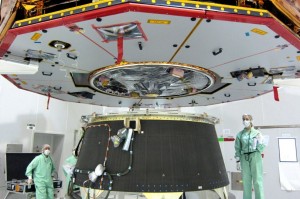
Approach of Gaia: view of the satellite-to-ground transmitter. The solar panels are still protected from shocks and contamination.
The setting up of the clamp band that mechanically connects the satellite to the launcher, by RUAG:
During the separation of the satellite from the launcher in the final stage of the launch, this band, tightly fixed on the ground, is released by a pyrotechnic device, and frees the satellite from the final stage of the launcher.
Connection of the umbilical outlets on the satellite with those of the adapter:
From now on, the electrical connections from the ground to the satellite are done only by these two links and the electrical cables that are connected there.
Electrical tests and first switch ON of the satellite since fuelling:
We perform several “health checks” on the satellite and we check that the umbilical connections have been correctly completed. With this part finished, the next phase can begin: the coupling with the Fregat stage. Fregat has previously been assembled, tested, and filled with its fuel in the S3 building, by the Russian teams. So, it is necessary to transfer the satellite/adapter ensemble from the S5 building to the S3 building.
As with the transfer to the S5 building , the satellite will be transported in the CCU3 payload container. For this, the satellite/adapter ensemble is installed on the base of the container.
For the record, this day was a particularly long one for the teams. All of the activity mentioned in this article took place in one single day – from 6am on Friday until 2am on the Saturday morning, starting with the preparation of the manoeuvre and continuing until the packing of the necessary ground equipment on the satellite’s exit from the CCU3. Two teams took turns and despite a few hazards, the objective was achieved.
On the night of Monday 9 December into the morning of Tuesday 10 December, the transport took place between building S5, where the fuelling and this coupling took place, and the S3 building where the mating with the Fregat stage of the launcher will take place.
Editor’s note: here are some recent photos showing the Gaia spacecraft being mated with the Fregat upper stage.
Bonus: The photographer and cameraman from CSG hard at work.
This blog entry was written by Isabelle Desenclos, Quality Assurance engineer on Gaia at Astrium Toulouse. The original version of the article in French is available in her personal blog. Thank you for sharing, Isabelle!
Photographs were taken by the author, shared with the kind permission of the chefs de mission for Gaia from Astrium, ESA and Arianespace.

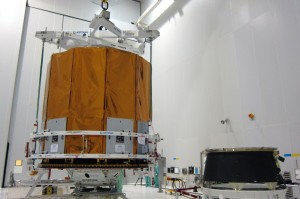
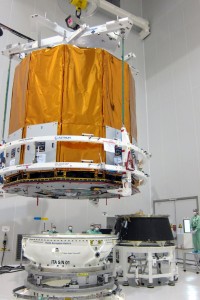
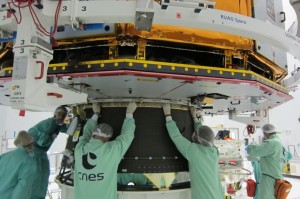

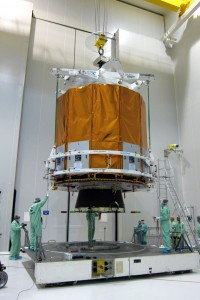
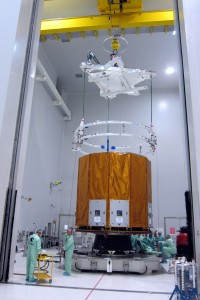

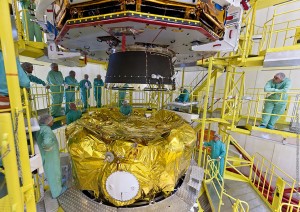
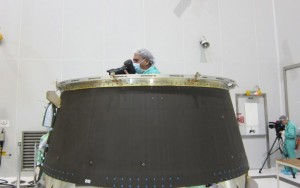
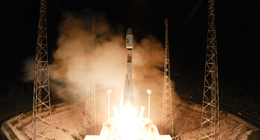
Discussion: no comments